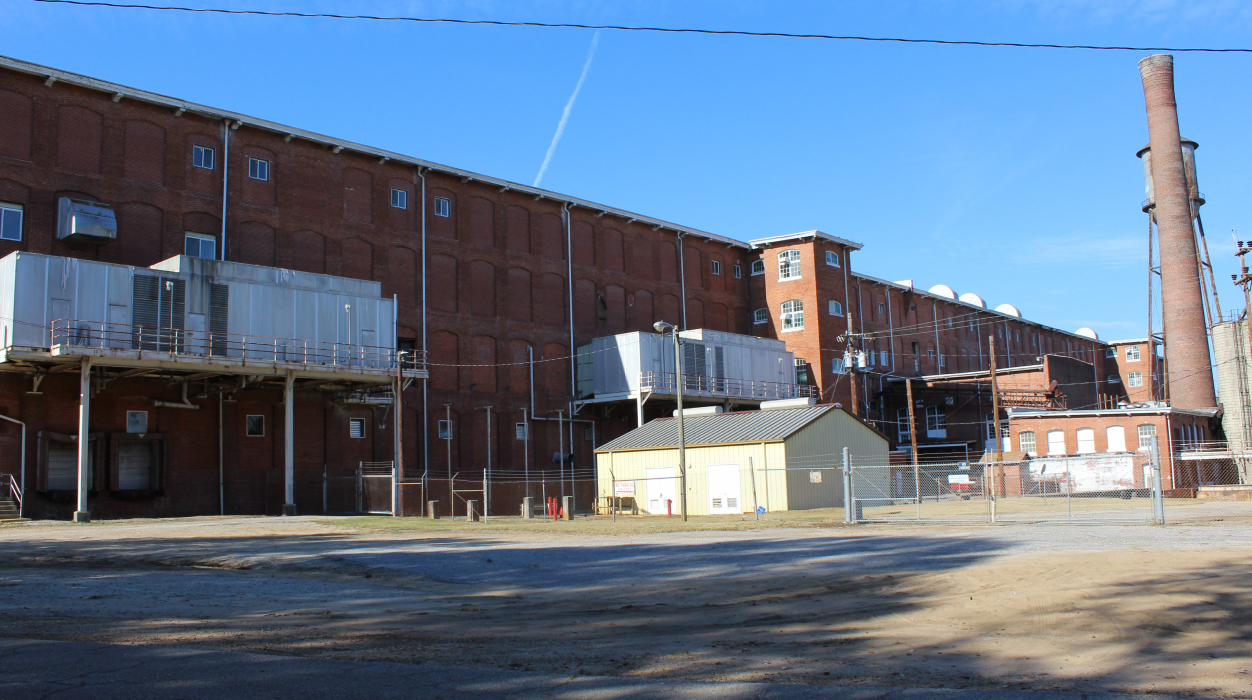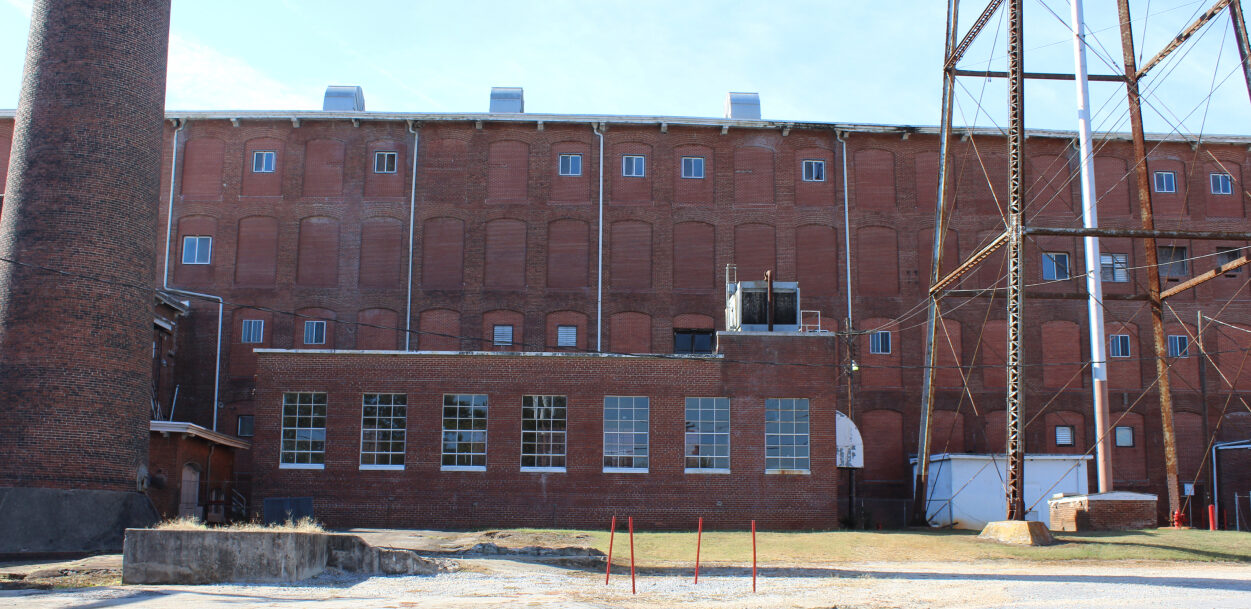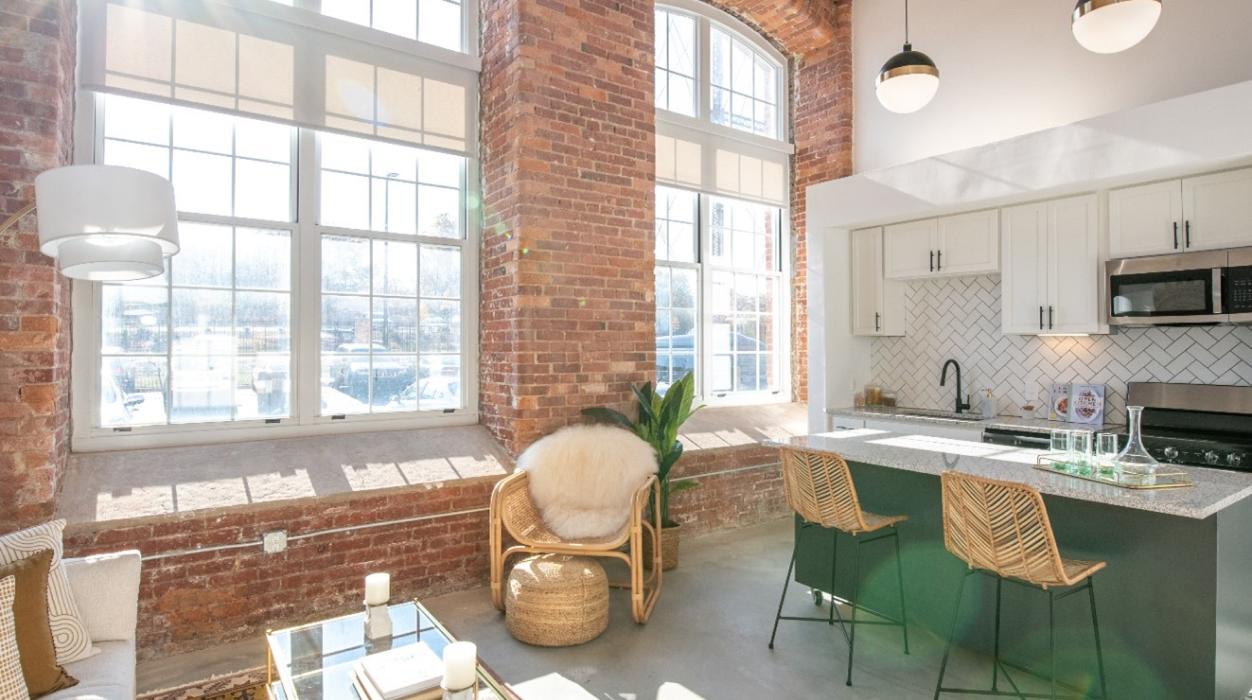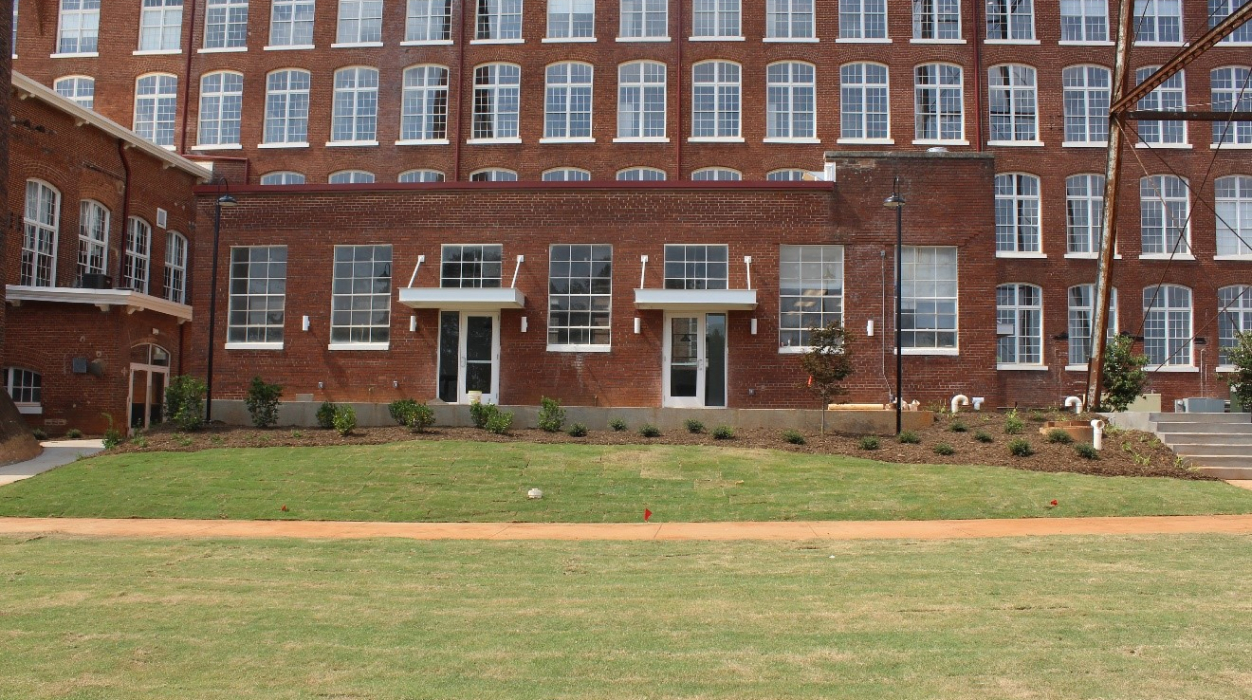State & Federal Tax Credits State Textile Mill Credit Bailey Bill
Greenville, SC
1902
GC Woodside Partners
Betsch Associates Caldwell Constructors
Lofts at Woodside Mil
By harnessing state and federal historic credits, coupled with the state mill credit and Bailey Bill tax abatement, the rehabilitation of the Woodside Cotton Mill into the Lofts at Woodside wove together a rehabilitation plan that reinvigorated not just the mill itself, but the ancillary structures on the site to create a vibrant community and successful project. The 309 apartments retain the industrial character of the historic textile, including interior wooden columns, exposed brick walls, and the mill’s eighteen-foot ceilings, keeping the massing of the space intact. Thoughtful consideration was given to where original painted walls, ceilings, and columns would remain while carefully removing paint in private areas to provide a raw aesthetic. Central corridors running the length of the building to access the apartments and allow the mill interior’s original height to be displayed. Concrete floors were added to create acoustical and fire separation between each level of the building and maintained the industrial character of the mill. New sheet rock walls separated each apartment while leaving the exterior envelope walls brick. Exposed ductwork adds to the industrial feel of the building.








Built in 1902 by John T. Woodside, the Woodside Cotton Mill became one of the most successful textile manufacturers in the early 20th century. In its first decade of operations, the physical plant grew in size to its current configuration, which at the time housed 112,000 spindles, with additional outbuildings dotting the landscape. When the additions were complete in 1912, the mill was said to be the largest cotton mill under one roof in the United States.
By 1925, Woodside Mill was “the undisputed flagship of Greenville’s major cotton mills.” John T. Woodside lost ownership of the mill during the Great Depression, but the mill remained in operation until 1984. Stone Manufacturing Company, another Greenville textile giant, purchased the plant in 1986 for its garment cutting and distribution operations. The mill became vacant in 2006 and remained so until the rehabilitation.





